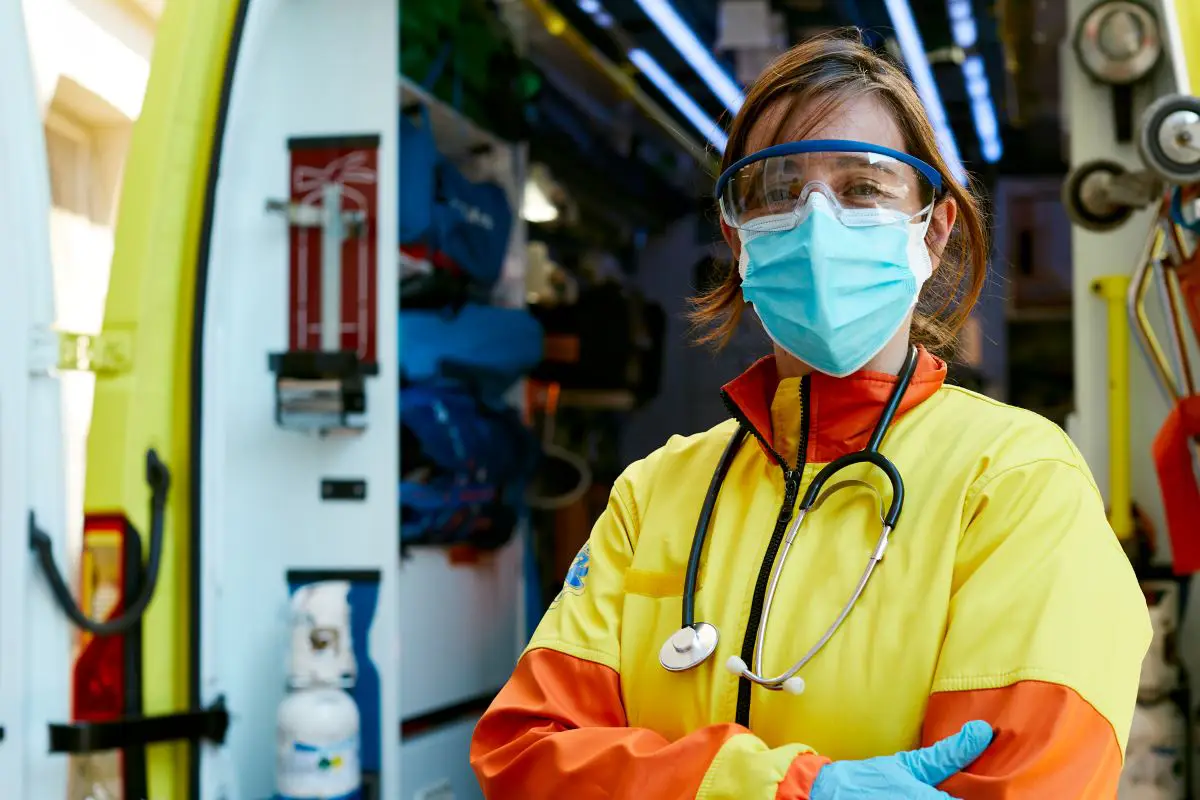New Study on the Early Days of COVID-19 Reveal Proper Training a Must to Keep EMTs and Paramedics Safe

It’s been a tremendously challenging few years for first responders. The COVID-19 pandemic that began in March 2020 took an already challenging industry landscape and grew those challenges and difficulties exponentially.
On top of the unavoidable and significant stressors inherent in emergency response, EMTs and paramedics would now do battle with an invisible and very personal threat. Every incident, every patient, and every call could have resulted in their own exposure to a virus that was still unfamiliar and had no effective treatment.
Though some frontline workers did have priority access to available PPE, which likely improved outcomes and lowered infection rates, the threat of COVID-19 infection was ever-present in the early days.
The calculus has changed repeatedly since the onset of the pandemic, with vaccines and treatments and weaker but more contagious variants and subvariants emerging during the years that followed. But unchanged is the omnipresent threat of infection among EMTs, paramedics, and emergency department healthcare personnel.
A new study from the Journal of Emergency Medical Services, a leading industry trade publication, examines the prevalence of COVID positive infections among healthcare and EMS responders in the early days of the COVID-19 pandemic.
Read on to learn what this study reveals about the work of EMTs during the early days of the pandemic and the vital role that quality EMS training played — both then and now.
EMTs Were More at Risk
The study tracked both symptomatic and asymptomatic positive cases of SARS-CoV-2 among frontline personnel (defined for the study as “urban emergency medical services [EMS]” and “ED healthcare personnel [HCP]”) over a 3-month period, from June to August 2020. By this time, both PCR and immunoglobulin G (IgG) COVID-19 tests were available, and the study made use of both types. The study was conducted using data from four of the largest emergency departments in the Dallas, Texas, metro area.
The group’s hypothesis was that positivity rates among frontline workers would be higher than expected, and that they would increase substantially over the three-month period. Both hypotheses were confirmed in the course of the study.
The study found that, at the outset, 3.7 percent of the 713 study participants tested positive for COVID-19. Fifty percent were asymptomatic, reporting no prior symptoms, and a significant percentage had previously been infected (so, in theory, may have tested positive based on detected antibodies). At the conclusion of the study, in August 2020, the figure had risen to 10.2 percent.
This figure did not include positive individuals in the 23 percent of the cohort that could not be reached for follow-up testing (some of whom almost certainly were unreachable due to illness). The study authors propose the percentage would have been higher with 100% of the cohort retesting at the study’s end.
Troubling Takeaways
There were a few troubling takeaways in the study. One was the prevalence of asymptomatic cases among healthcare workers, who likely contributed unknowingly to further spread. While noteworthy, this information — not well-known at the time — is common knowledge today.
The second takeaway is perhaps more troubling and is where we’d like to focus: this rise occurred despite better access to PPE and, generally speaking, better education about the virus within the first responder community.
While frontline workers were more often in proximity and exposed to the virus, they had better access to PPE and better training in how to protect themselves. But it wasn’t enough.
The study proposed that the ongoing PPE shortage could have been partially to blame for the rise in positivity rates. Some PPE was being rationed, and not all healthcare professionals had access to the gold standard N95 masks.
But equally to blame was a lack of training or education: when to wear PPE, how to wear it properly, and what precautions EMTs and paramedics should take around symptomatic and asymptomatic patients.
Key Observation: Training Matters
One key observation from the study is the power of high-quality training and teaching for frontline workers. Even in those early days of the pandemic, there were best practices and training resources available for how to approach patients regardless of obvious COVID-19 symptoms. But those resources didn’t have the reach or staying power among frontline workers that they needed.
This lack of training (or lack of compliance) was an issue even beyond the front line, with another referenced study finding administrators and others attending in-hospital meetings without face coverings (and testing positive at higher rates).
With this elevated need for training in mind, Public Safety Group presents the newly completed ninth edition of Nancy Caroline’s Emergency Care in the Streets, the premier paramedic education training program. This new ninth edition includes updates related to COVID response, including imagery reflecting appropriate PPE in COVID settings.
The medical community and the public know far more today about COVID than they did at the onset. Don’t let a lack of current training materials stop you or your students from being prepared for whatever comes next.